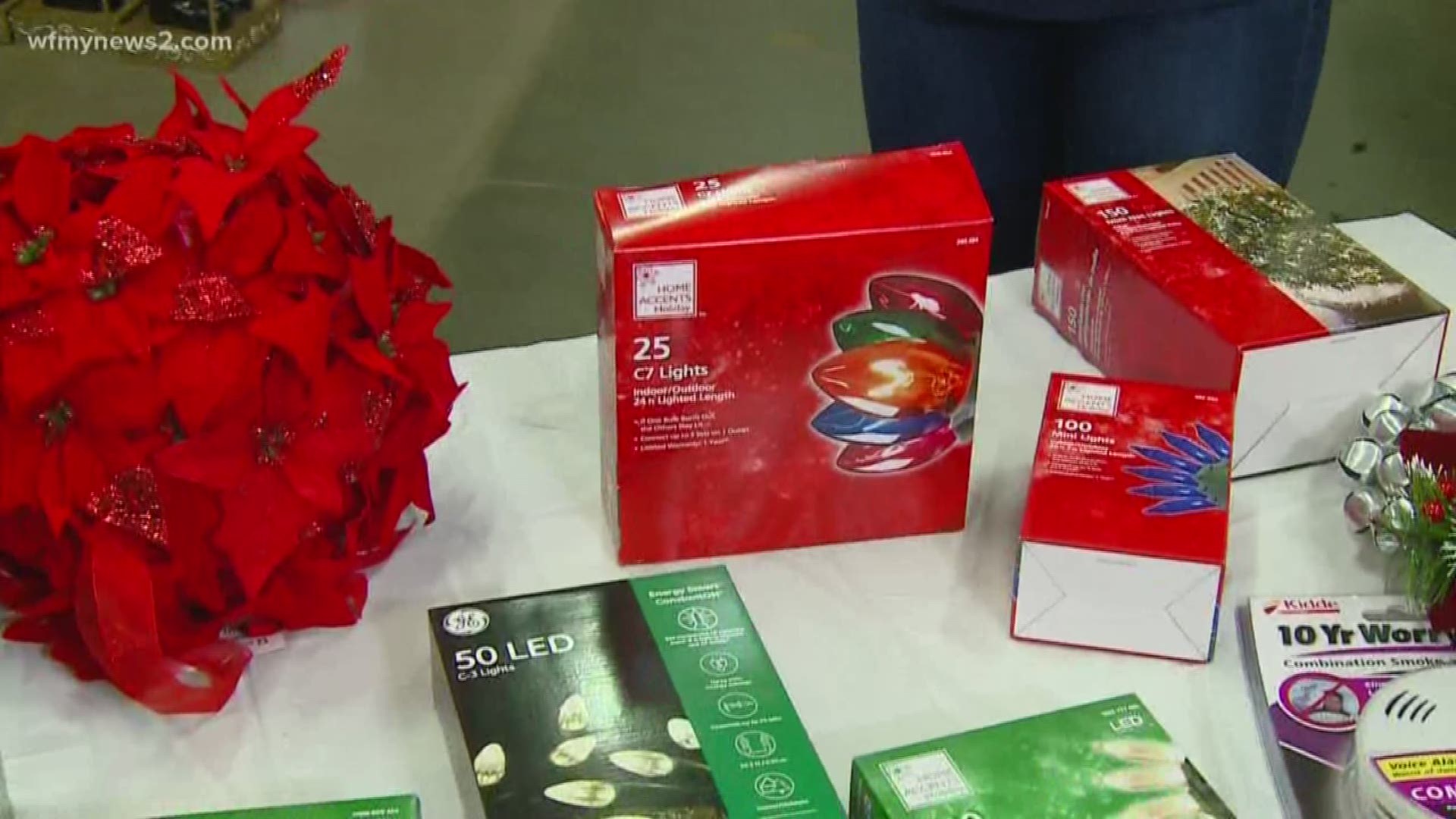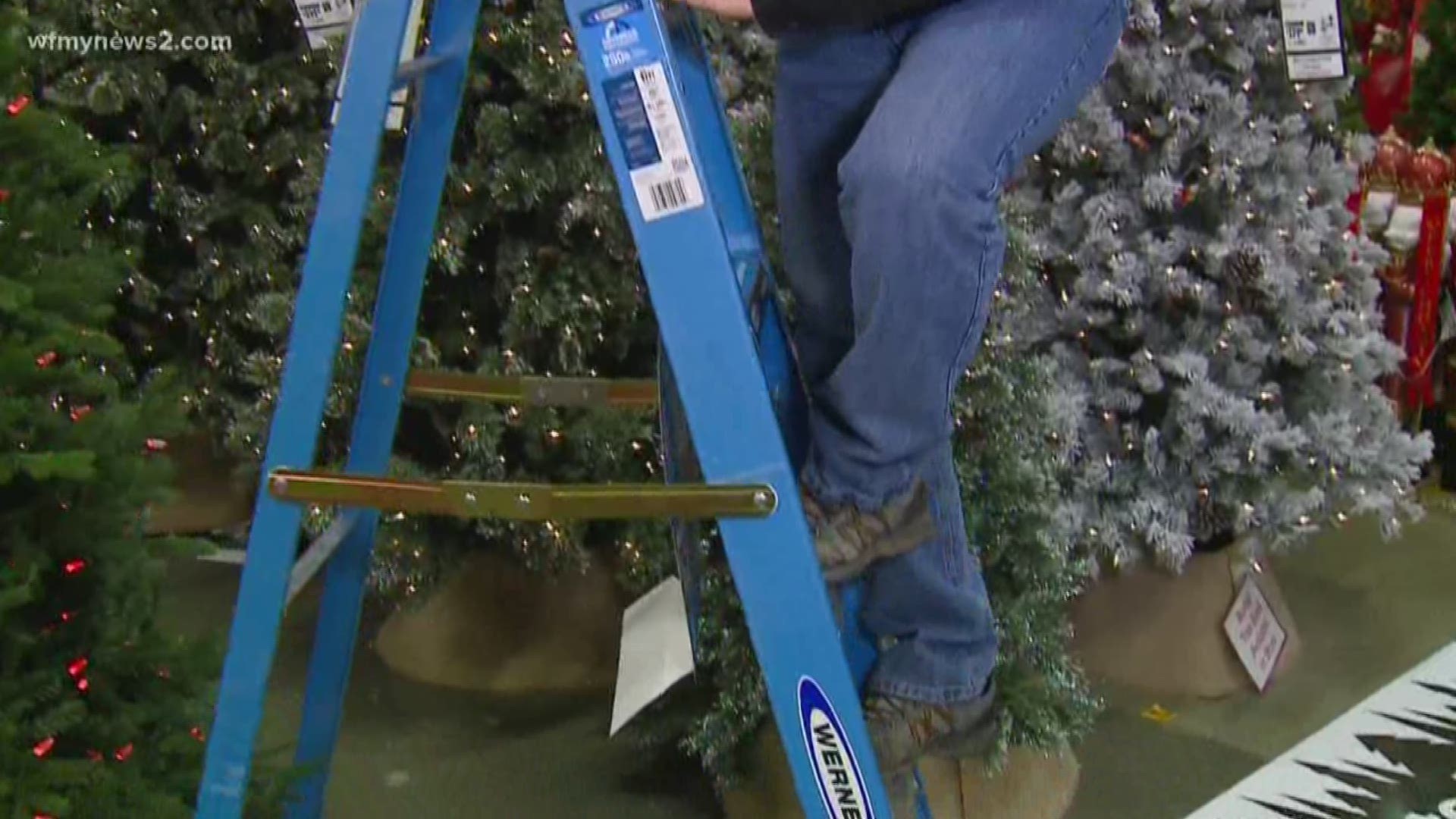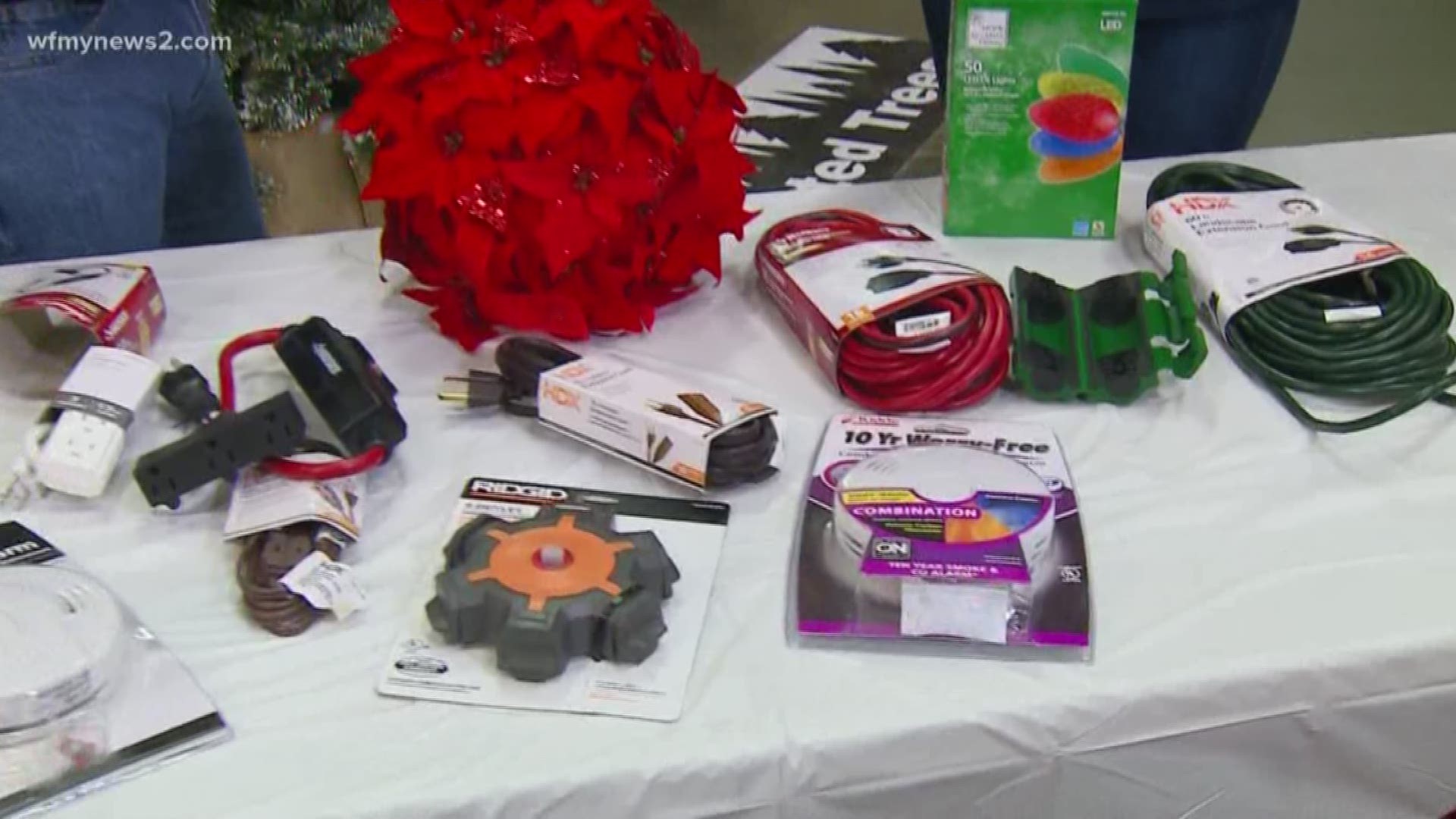GREENSBORO, N.C. - During the holiday season, you might want to decorate your home with lights, wreaths, outdoor inflatables, and much more.
But, before you get into the holiday spirit, you should make safety a top priority.
According to the U.S. Consumer Product Safety Commission (CPSC), about 250 injuries are reported a day during the holiday season in November and December.
"Safety should be part of all your decorating efforts," said CPSC Acting Chairman Ann Marie Buerkle. "Make sure your live Christmas tree has plenty of water, keep lit candles away from flammable items, and use caution when standing on a ladder or a chair to hang decorations."
According to the latest CPSC report, about 14,700 people were rushed to the emergency room to be treated for holiday-related injuries in 2016.
The most frequent holiday decorating incidents involved falls, lacerations, and back strains.
3 people also died after falling from a ladder.
Holiday fires are another concern, causing severe injures and deaths.
More than 1,300 fires were reported in 2016, involving Christmas trees and candles.
The CPSC report also shows 20 people died and dozens were rushed to the hospital due to holiday fires.
The U.S. Consumer Product Safety Commission (CPSC) offers the following holiday decorating tips to keep your family safe:
Trees and Decorations
- Buying a live tree? Check for freshness. A fresh tree is green, its needles are hard to pull from branches, and its needles do not break when bent between your fingers. The bottom of a fresh tree is sticky with resin, and when tapped on the ground, the tree should not lose many needles.
- Setting up a tree at home? Place it away from heat sources, such as fireplaces, vents, and radiators. Heated rooms rapidly dry out live trees, be sure to monitor water levels daily and keep the tree stand filled with water. Place the tree out of the way of foot traffic and do not block doorways with the tree.
- Buying an artificial tree? Look for the label: "Fire Resistant." Although this label does not mean that the tree will not catch fire, the tree is more resistant to catching fire.
- Decorating a tree in homes with small children? Avoid sharp or breakable decorations. Keep trimmings with small removable parts out of the reach of small children who could swallow or inhale small pieces. Avoid trimmings that resemble candy or food that may tempt a child to try to eat them.
Candles
- Keep burning candles within sight. Extinguish all candles before leaving the room.
- Keep candles on a stable, heat-resistant surface where children and pets cannot reach them or knock them over.
- Place lit candles away from items that can catch fire such as trees, decorations, curtains and furniture.
Lights
- Only use lights tested for safety by a nationally recognized testing laboratory. Lights for both indoor and outdoor usage must meet strict standards that testing laboratories are able to verify.
- Check each set of lights, new or old, for broken or cracked sockets, frayed or bare wires, or loose connections. Throw out damaged sets and do not use electric lights on a metallic tree.
- Check each extension cord to make sure it is rated for the intended use and is in good condition. Do not use cords with cuts or signs of fraying.
- Check outdoor lights for labels showing the lights have been certified for outdoor use and only plug them into a ground-fault circuit interrupter (GFCI)-protected receptacle or a portable GFCI.
Fireplaces
- Use care with "fire salts," which produce colored flames when thrown onto wood fires. Fire salts contain heavy metals that can cause intense gastrointestinal irritation and vomiting if swallowed. Keep them away from children.
- Do not burn wrapping paper in the fireplace. A flash fire may result because wrappings can ignite suddenly and burn intensely.
Smoke alarms
- CPSC recommends having working smoke alarms on every floor of the home and in every bedroom. The early warning provided by smoke alarms saves lives.
- Test your smoke alarms every month to make sure they are working properly.
- Change batteries in smoke alarms every year.
Ladders
- Heed the warning labels on ladders.
- Always select the correct ladder for the job. That's one that extends at least 3 feet over the roofline or working surface.
- Always place your ladder on level and firm ground. Use leg levelers under the ladder to level uneven or soft ground. Leg levelers are devices that you can buy at a hardware or home improvement store.
- Make sure the ladder can support both your weight and the load you are putting on it by checking the ladder's maximum load rating.
- Make sure your straight and adjustable ladders have both slip-resistant feet.
- Set up straight, single or extension ladders at about a 75–degree angle. To test if you have the correct angle, stand up straight with your toes touching the feet of the ladder as it leans away from you. Extend your arms in front of you. Your palms should touch the top of the rung that's at shoulder level.
- Don't use a metal ladder near power lines or electrical equipment. Stick with wood or fiberglass ladders in these situations and use extra caution. And no ladder should ever touch a live electric wire.
- Check all rung locks and spreader braces on your ladder to make sure they are set.
- Have a helper hold the bottom of the ladder. Keep ladders away from a door that can be opened. Only allow one person on a ladder at a time.
- Center your body between the rails of the ladder at all times. Leaning too far to one side while working is a no-no and can cause you to fall. If you were to have a belt on, the buckle should never be outside of the right or left rail of the ladder. Do not stand on the top three rungs of a straight, single or extension ladder.
- Stay off of the ladder's top step and bucket shelf. Labels on ladders warn you not to stand on them as well. Don't try to climb or stand on the rear section of a stepladder.
- Only use a ladder for its intended purpose. And follow the ladder's instruction labels.
- When you're done with the ladder, put it away immediately. Never leave a raised ladder unattended.




